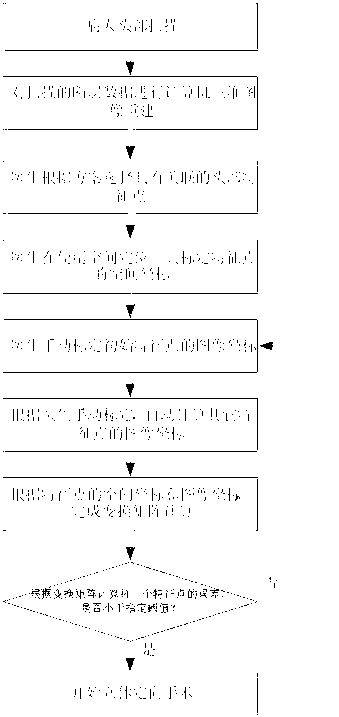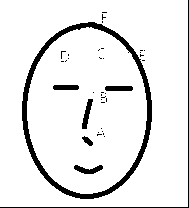Head and facial marker semiautomatic calibration method for neurosurgical stereotactic surgery
A stereotaxic, neurosurgical technology, applied in the field of surgical navigation, can solve the problems of lack of any direct connection, error-prone, registration accuracy error, etc., to improve registration accuracy, improve simplicity and registration accuracy, and reduce errors. The effect of the probability of the operation
- Summary
- Abstract
- Description
- Claims
- Application Information
AI Technical Summary
Problems solved by technology
Method used
Image
Examples
Embodiment Construction
[0031] In order to realize the semi-automatic registration of marker points on the surface of neurosurgery stereotaxic operation proposed by the present invention, we propose a specific feature point selection scheme. The process and specific operation scheme of the present invention will be described in detail below in conjunction with the accompanying drawings.
[0032] figure 1 It is a flowchart of the present invention, specifically comprising the following steps:
[0033] Step 1: CT or MRI scanning is performed on the patient's head. During scanning, the patient does not wear any headgear or markers to obtain head tomographic data;
[0034] Step 2: Perform three-dimensional reconstruction of the tomographic data by computer software to obtain three-dimensional image data of the human brain, and apply surface reconstruction algorithms in the field of scientific visualization to obtain three-dimensional model data of the head and face.
[0035] Step 3: Before the operation...
PUM
 Login to View More
Login to View More Abstract
Description
Claims
Application Information
 Login to View More
Login to View More - R&D
- Intellectual Property
- Life Sciences
- Materials
- Tech Scout
- Unparalleled Data Quality
- Higher Quality Content
- 60% Fewer Hallucinations
Browse by: Latest US Patents, China's latest patents, Technical Efficacy Thesaurus, Application Domain, Technology Topic, Popular Technical Reports.
© 2025 PatSnap. All rights reserved.Legal|Privacy policy|Modern Slavery Act Transparency Statement|Sitemap|About US| Contact US: help@patsnap.com



